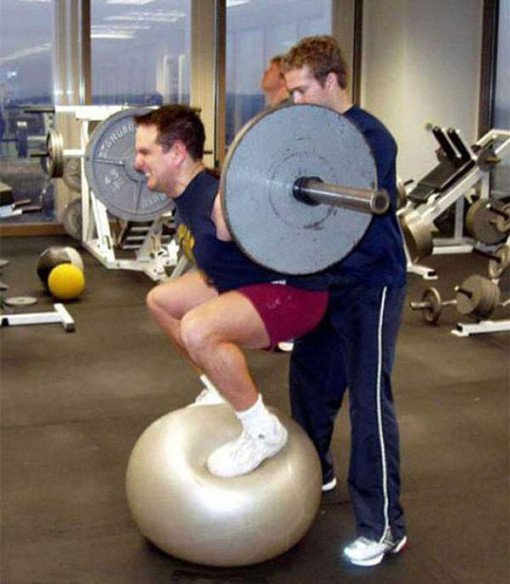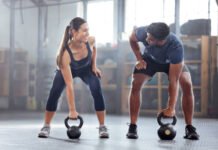Why Is Spotting Important?
Spotting someone on the bench press is a crucial part of weight lifting safety. When spotters are present in a workout session, they provide extra support in case the lifter loses control of their weight or needs assistance getting back up after completing a set. This extra layer of protection helps minimize injury risk and ensures that lifters are able to push themselves to their limits without fear of serious injury. Additionally, having a spotter allows you to work with heavier weights than you could safely lift alone, allowing you to make more progress than you otherwise would have.
Tips For Spotting Someone In The Gym
A proper spot on the bench press should do two things: Prevent a barbell loaded with weights from crushing your trachea when you’re too gassed to do another repetition and enable you to squeeze out another rep or two that you wouldn’t have gotten if not for some assistance. Thing is, there’s a huge difference between being a good spotter and an idiot who grabs the bar at the wrong time. So whether you’re being spotted or doing the spotting, you’ll want to know the proper technique. For some tips, we turned to a super smart guy with lots of letters after his name — Dr. Carwyn Sharp, Ph.D., CSCS, RSCC, the chief science officer for the National Strength and Conditioning Association.

#1. DON’T STRADDLE THE DUDE BENCH PRESSING
You should be standing at the end of the bench close enough to lift the bar. Where you shouldn’t be standing is so close to the dude bench pressing that your junk is dangerously close to his face. “Do not straddle the athlete,” Dr. Sharp explains. “I’ve seen pictures of this and it seems … unsafe and inappropriate. The spotter’s feet should be shoulder-width apart with the knees slightly flexed.”
#2. USE BOTH HANDS
Trying to spot someone with one hand doesn’t make you look strong like bull; it makes you look simple like moron. It’s also dangerous. “Spotting with one hand is definitely a no-no,” Dr. Sharp says. “The spotter should provide a stable base of support to the athlete at all times, and a single hand can act more like a fulcrum for the bar to rotate on (like a teeter-totter) rather than a stable base.”
#3. USE AN ALTERNATE GRIP ON THE BAR
Keep your hands inside of the hands of the person bench pressing if they’re doing a standard bench press (grasping the bar at or about shoulder width). Use an alternate grip on the bar and provide assistance only when the upward movement of the bar stops.
#4. THE SPOTTER SHOULDN’T DO ALL OF THE WORK
Don’t yank the bar and pull it upward when you think you’re needed. Instead, ask the person bench pressing for a signal they’ll give you to tip-off that they’re not going to get the rep. Then, provide just enough assistance for the person to complete the rep.
“Use a smooth graded manner rather than an abrupt one,” Dr. Sharp suggests. “Unless the athlete cannot provide any force to the rep, they should signal the spotter to take the weight while remaining with the bar until it is racked. As the athlete moves the bar the spotter’s hands should remain in a closed alternated grip close to but not touching the bar, and the spotters back should remain flat while they flex at the knees, hips, and torso.”
And if you’re asked to spot a Hulk who’s lifting 500 pounds, it’s okay to decline. Only take on what you can handle. “There’s a learning curve to being a good spotter,” Dr. Sharp reveals.
#5. HAVE ALTERNATIVES IN MIND IF NO SPOTTER IS AROUND
Okay, this doesn’t exactly make you a better spotter. But it makes you a better and smarter weightlifter. You can still bench press if there’s no spotter around, but lift lighter weights for more repetitions. “There is research that supports the idea that you do not have to go to failure all the time to get significant gains in strength and mass,” Dr. Sharp explains.
It’s also a good idea to have alternative exercises in mind, like a chest press machine or a Smith machine. You can use dumbbells, but without a spot it’s not a good idea for novices.
“A chest press machine allows the athlete to lift heavy weights in a safe manner without the risk of dropping the weight on themselves,” Dr. Sharp says. “A Smith machine (which allows you to rack the bar by twisting your hands) is best used with a spotter but can be used safely if the stops are put in at an appropriate height to prevent the bar falling on the athlete.”




